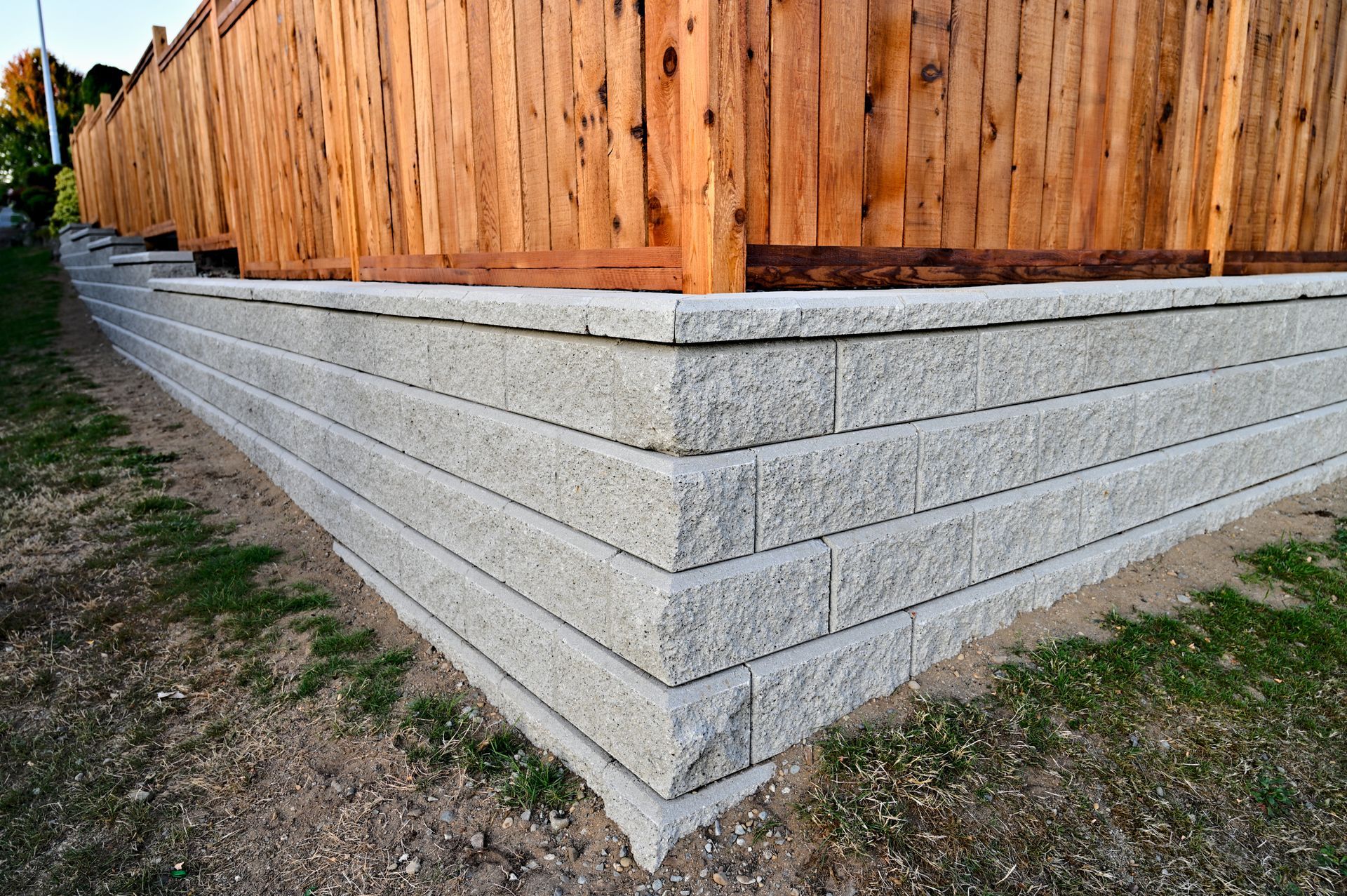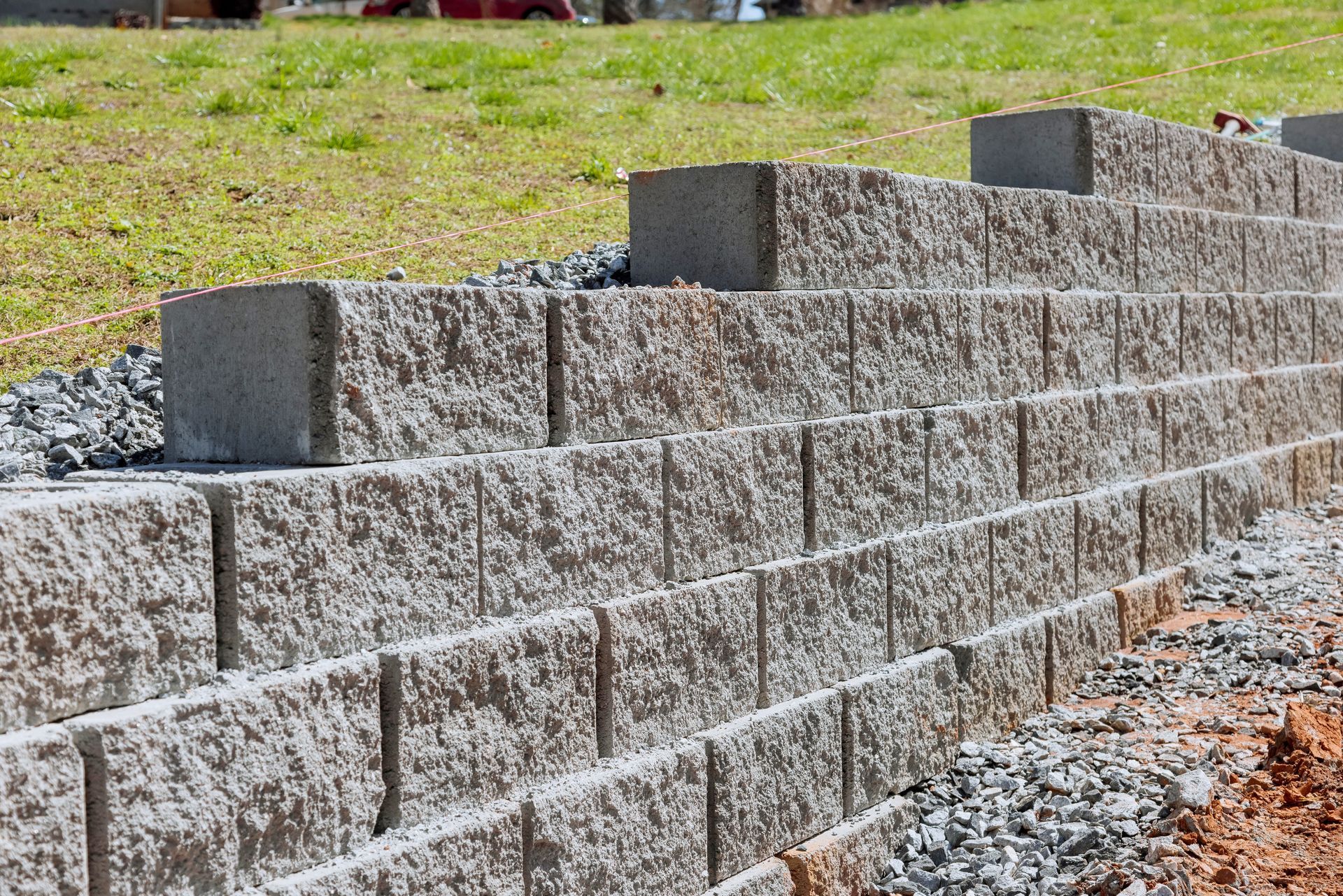Durable & Stylish Retaining Walls for Your Landscape
Retaining walls do more than just hold back soil—they add structure, prevent erosion, and enhance the overall look of your property. At The Wizard of Sod, we design and build high-quality retaining walls that improve both function and curb appeal. Whether you need a small garden wall or a large structural retaining wall, we have the expertise to get the job done right.

Custom Design & Professional Installation
We take the time to assess your landscape, soil conditions, and drainage needs before designing a retaining wall that blends seamlessly with your property. Our team ensures proper reinforcement and grading to build a wall that stands the test of time.
Benefits of a Retaining Wall
- Prevents Erosion – Keeps soil in place, especially on sloped properties.
- Improves Drainage – Helps redirect water to prevent pooling and flooding.
- Creates Level Spaces – Perfect for tiered gardens, patios, or walkways.
- Enhances Curb Appeal – Adds a polished, professional look to your landscape.
- Increases Property Value – A well-built wall can boost your home’s resale value.
Types of Retaining Walls We Build
Stacked Stone Walls
Natural, timeless, and great for gardens or decorative accents.
Concrete Block Walls
Strong and durable, ideal for larger structural support.
Boulder Walls
Rustic and sturdy, perfect for natural-looking landscapes.
Timber Retaining Walls
A cost-effective option with a warm, natural aesthetic.
Paver & Brick Walls
Adds a classic touch to patios, walkways, and outdoor spaces.
Areas We Serve for Retaining Walls

Get Started Today!
Ready to add a functional and beautiful retaining wall to your property? Give The Wizard of Sod a call at (704) 807-0667 or email Marc@TheWizardofSod.com to schedule a consultation.
Stronger, Smarter Landscaping Starts Here!

